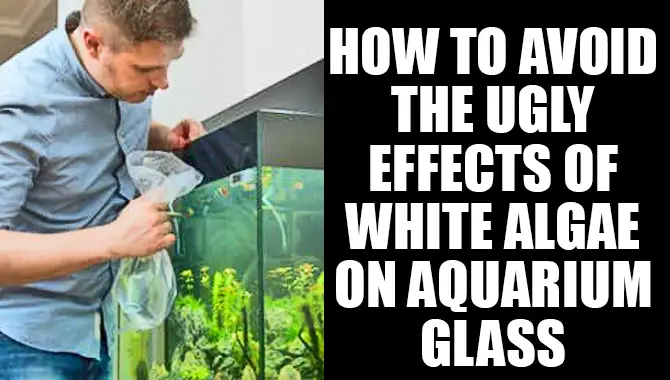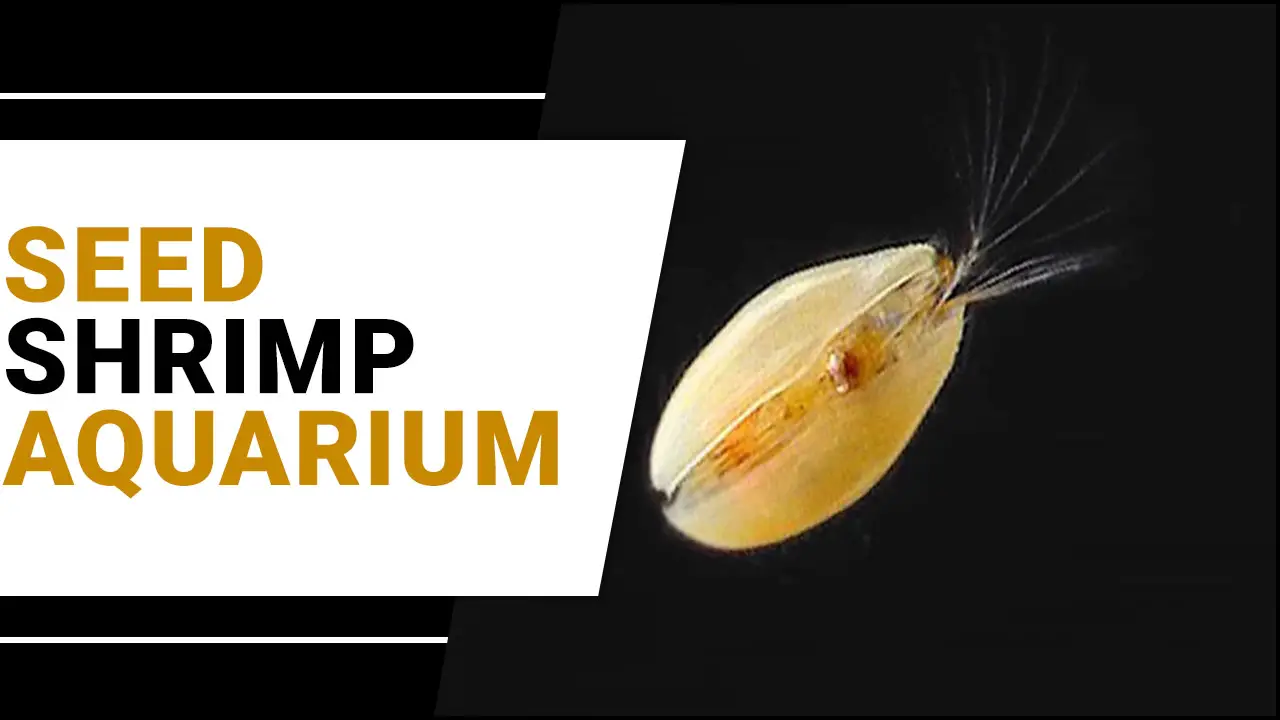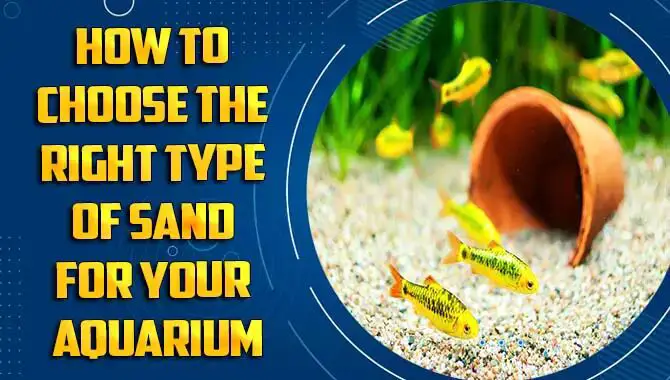White algae form is a type of algae that appears as a white, powdery substance on surfaces such as rocks, walls, and plants. It is commonly found in aquatic environments such as ponds, aquariums, and swimming pools.
White algae form can be unsightly and may indicate an imbalance in the water’s nutrient levels or poor water quality. Most fish tank owners aim to reduce algae growth in their fish tanks whenever possible. There are various ways of reducing algae growth in aquariums that we’ve listed below for you to choose from.
White algae is a common type of algae that can grow on aquarium glass. We’ll cover how to safely remove white algae from aquarium glass. In addition, it provides an algae-free substrate for fish to live on, making the water in the tank cleaner.
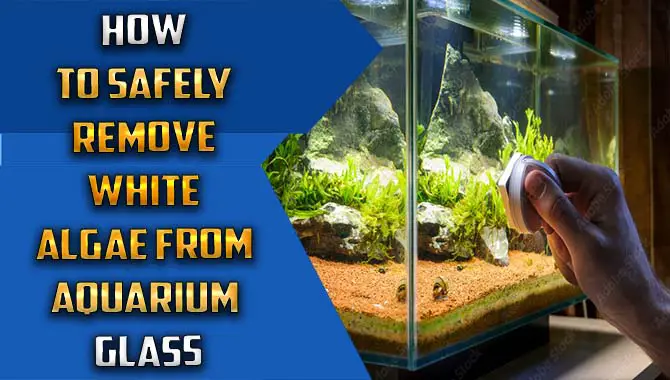
Techniques On How To Safely Remove White Algae From Aquarium Glass
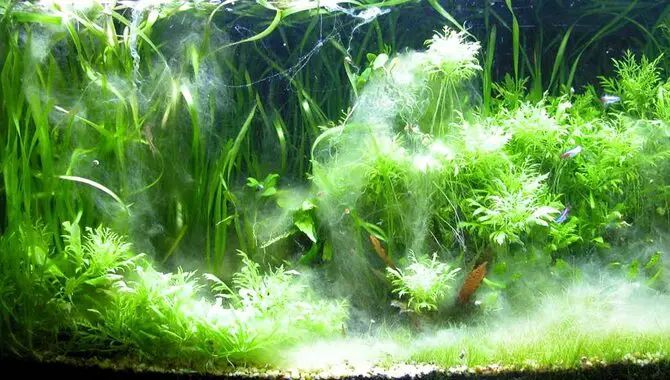
White algae is a type of algae that can be found in freshwater aquariums. It is white, and its growth can cause white residue on aquarium glass. White algae may cause fish to become sick or die due to poor water quality when it is present in high numbers.
It can also lead to water quality issues for tank owners, as it absorbs light and nutrients from the water. The white algae growth can be reduced with frequent water changes and by avoiding overfeeding fish. Turning aquarium glass upside down and letting it fall out of the tank is another effective way to eliminate excess algae growth.
White vinegar is another valuable tool for removing white algae from aquarium glass. The white film can be soaked in white vinegar for several hours, which will help loosen the algae’s grip on the glass without damaging it.
Also, scraping off undesired algae-related substances with a piece of cloth or using other equipment for this purpose can help remove the algae safely. In addition to these methods, regular water changes and avoiding overfeeding fish can help reduce the growth of white algae in aquariums.
Cleaning The Glass With A Sponge
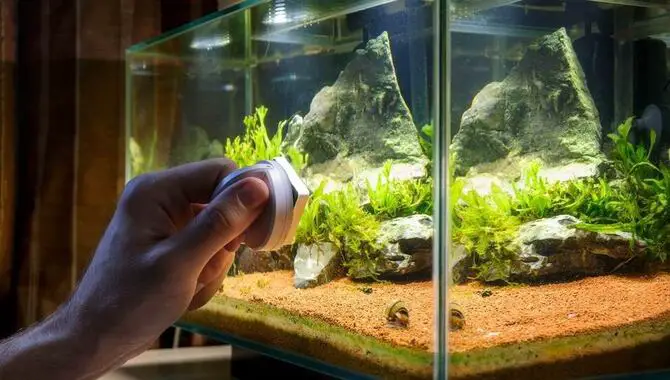
White algae can be a nuisance to aquarium hobbyists. It often forms on aquarium water’s surface, giving it a white, cloud-like appearance. But white algae also threatens fish and plants inside the tank. It can cause algae growth and reduce water quality. Use an effective and safe cleaning product for freshwater aquariums to avoid white algae growth in your tank.
Vinegar is one common option that effectively removes white algae from aquarium glass. Other options include cleaning products designed to remove algae from aquarium glass or scrub the tank walls with an algae scraper (that is tough enough to slice through the algae but won’t scratch the glass or acrylic). By keeping aquarium water clean, maintaining a high fish-to-plant ratio, and using effective cleaning methods, white algae growth in aquariums can be prevented and maintained at bay.
Increasing Water Flow
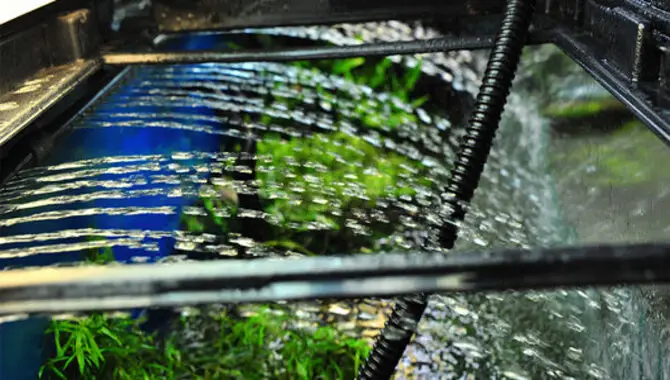
White algae can be a nuisance in aquariums, growing on the glass and causing an eye-catching visual change to the water. To remove white algae from aquarium glass, it is necessary to increase the water flow in the tank.
Using A Algae-Eating Fish To Remove Algae
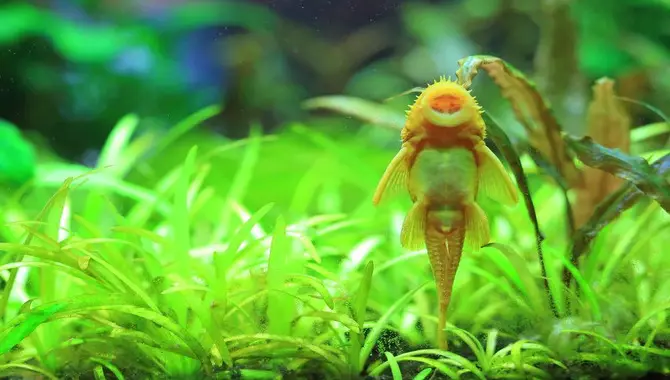
Algae-eating fish consume algae and help keep the growth of algae under control by reducing the excess nutrients in the water that can lead to algae growth. To ensure the best algae-eating fish performance, ensure good water quality and enough light in the aquarium. Regular water changes can help reduce excess nutrients in the water, one of the factors that can cause algae growth.
It is important to remember that algae-eating fish are only effective at removing algae from aquarium glass if fed regularly with shrimp or other types of seafood containing high protein levels. Combining algae-eating fish and proper care can go a long way in keeping an aquarium healthy and free of algae.
Use A Commercial Algae Remover
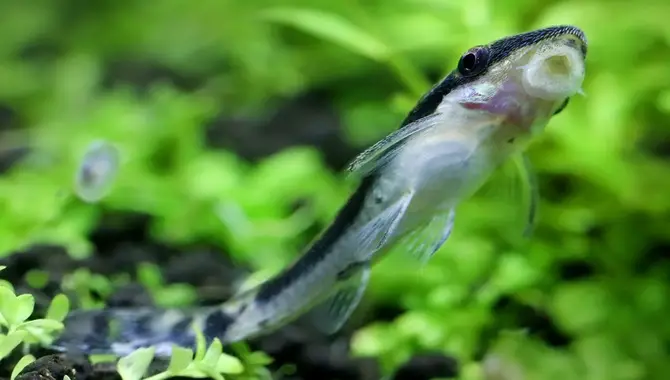
It can grow rapidly and forms a layer on aquarium glass, making viewing fish within the tank difficult.
When using this type of remover, follow the instructions on the label to remove white algae growth from aquarium glass safely.
Additionally, regular cleaning of aquarium glass is essential to prevent algae growth. Other preventative measures to reduce white algae growth in your aquarium include minimizing light exposure and removing excess nutrients from the water. By taking these steps, you can help keep your fish healthy and thriving in your aquarium.
Use A Vinegar Solution
White algae can cause problems in aquariums, so it’s essential to safely remove it from the glass. A vinegar solution is one of the most effective ways to do this. Mix vinegar with water to create this solution and use it to soak the aquarium glass for several hours.
Afterwards, it’s best to use other equipment, especially for cleaning aquarium glass or using a toothbrush to scrub away any excess algae-related substances.
If white algae overgrowth persists, turn the aquarium glass upside down to let everything fall out of the tank. Besides, cleaning your aquarium regularly and replacing damaged or worn tank equipment is always good practice.
Use A Soft Cloth To Rub The Algae Off The Glass Gently
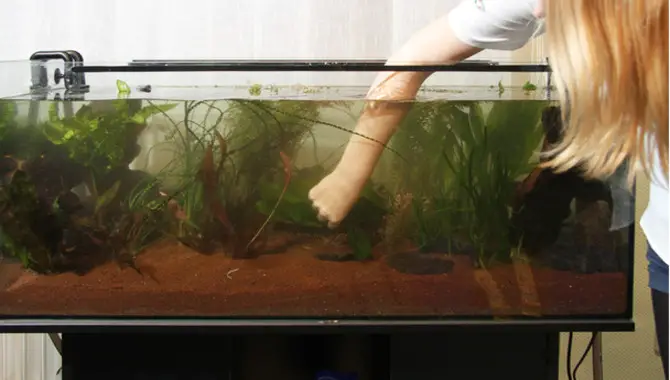
Using a soft cloth or sponge, gently rub the affected areas to remove the algae without scratching or damaging the glass. Avoid harsh chemicals or abrasive materials, which can harm aquatic plants and animals.
It’s also essential to address the root cause of the algae growth, which may be due to excessive light or nutrient levels in the water. Maintaining proper water conditions and regularly cleaning your aquarium can prevent future algae growth and keep your underwater ecosystem healthy and beautiful.
Another effective way to remove algae from aquarium glass is to use a razor blade or algae scraper, but avoid using sharp tools such as knives. Instead, use a tool designed specifically for cleaning algae-related buildup from the surface of small objects.
Wear eye protection and protective clothing when cleaning aquarium glass with any tool to ensure safety. To safely remove algae from aquarium glass, always follow basic safety precautions and clean the tank thoroughly before starting any cleaning procedure.
Use A Freshwater Mix And Baking Soda

White algae can be a nuisance to aquariums if it grows too much or forms a layer of residue on the glass. It is important to use safe methods and cleaning products to remove white algae from aquarium glass effectively. One effective method is to use a freshwater mix and baking soda.
The freshwater mix should consist of water with a high-ish pH and some type of filter media, such as gravel or sand. Baking soda has high alkalinity, and when combined with water of high pH, it can safely and effectively neutralize algae growth.
What To Do If White Algae Forms On Other Surfaces In The Aquarium?
White algae can be a common problem in aquariums, and it’s important to take action if it starts forming on other surfaces. The first step is to identify the cause of the algae growth. It could be due to excess nutrients in the water or inadequate water flow, so adjusting these factors may help prevent further growth. If the white algae have already formed, scrub it off with a soft brush or sponge.
However, be careful not to disturb live plants or harm fish. You may also want to consider adding algae-eating fish or snails to your tank, as they can help keep the algae under control. Regular maintenance and water quality monitoring can also help prevent future outbreaks of white algae in your aquarium.
Also, reduce the amount of light entering your aquarium to help prevent white algae from forming. Finally, regularly clean the surfaces of your aquarium to remove any white algae that may form. Following these tips, you can enjoy white algal growth in your aquarium without any problems.
Are White Algae Harmful To Your Fish?
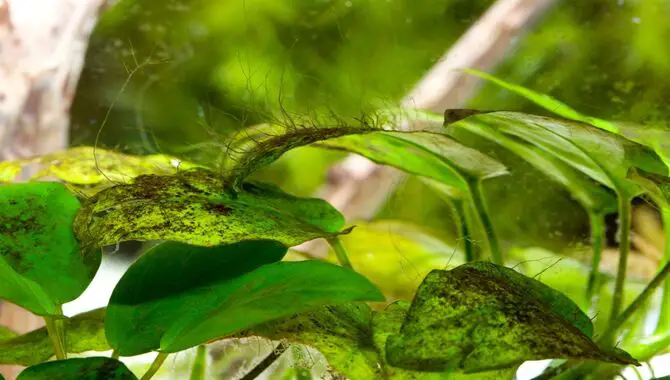
White algae aren’t harmful to fish or other aquarium occupants. However, white algae on driftwood can be disruptive to fish. People often see this algae in freshwater aquariums, and it can quickly grow on driftwood decorations. It can form large colonies and become a nuisance to fish that try to eat it.
Which leads to excess nutrients and algae development. Poor filtration also contributes to white algal growth. If too much light is provided, algae will out-compete plants for sunlight, making the water devoid of nutrients.
These factors can cause an algae infestation in your tank. The fish tank usually needs nine hours of light daily, but it varies depending on the tank size and type of fish being kept. So if you notice white algae growth, take corrective action as soon as possible to prevent any damage to your tank or fish.
What Are The Risks Associated With Attempting To Remove White Algae From Aquarium Glass?
Removing white algae from aquarium glass can be risky if not done properly. One of the main risks is disturbing the natural balance of the aquarium—algae, including white algae. Play an important role in maintaining the aquarium’s ecosystem by providing oxygen and nutrients for other organisms. If too much algae is removed. It can disrupt this delicate balance and cause harm to the fish and different aquatic life.
Another risk associated with removing white algae is damaging the glass or equipment in the aquarium. Using harsh chemicals or abrasive tools can scratch or damage the glass, leading to leaks or breakage in the future. Additionally, some cleaning products may contain harmful chemicals that can be toxic to fish and other aquatic life.
To minimize these risks, it is important to use gentle cleaning methods and avoid using harsh chemicals or abrasive tools. It is also important to monitor the aquarium closely after cleaning to ensure that the water quality remains stable and that no harm has been caused to the aquatic life.
Conclusion
Cleaning aquarium glass is an effective way of removing algae from the glass surfaces of your tank. However, it is important to note that white algae growth is normal in fishkeeping. And cleaning aquarium glass will not affect fish growth or health. If you are struggling with algae growth, you might consider switching to a freshwater algae-fighting fish or freshwater algae-removing plants such as water lettuce or water sprite.
Either of these plants will help keep algae growth under control in your tank. To safely remove algae from aquarium glass, use freshwater fish-eating plants like water lettuce and water sprite to eat algae.
Commercial algae-removing products like algae-eating fish or algae-eating plants can be used. We’ve discussed how to safely remove white algae from aquarium glass. However, if the algae persist or grows on other surfaces of your aquarium tank or filter, seek professional help to remove the algae from all surfaces of the aquarium tank.
Frequently Asked Questions
How Do I Get The White Stuff Off My Fish Tank Glass?
To clean the fish tank glass of white buildup, mix equal parts of white vinegar and water in a spray bottle. Soak a cloth or a fish tank scrubber in the vinegar-water mixture and gently scrub the glass surface. Rinse with water and dry off with a piece of cloth. If algae are present on the glass, turn the aquarium upside down and let everything fall out. Use a cloth or a fish tank scrubber to scrape off algae-related substances.
What Is The White Slime On My Aquarium Glass?
It’s white slime on your aquarium glass. This type of slime is commonly caused by limescale or algae buildup. Limescale results from the evaporation of hard water, and algae growth is encouraged in aquariums with too much light. Poor/irregular water temperature, dirty tanks, unmanaged tanks, organic food waste, and overfeeding are potential causes of infection leading to white slime.
Will White Algae Hurt My Fish?
There is no direct harm that white algae will cause fish. However, white algae growth can make a fish tank appear grimy and murky. In addition, white algae can also be disruptive to fish because it competes for plankton and food, blocking light from reaching fish plants, and algae growth can cause fish stress or tank change their eating habits.
Which Chemicals Are Safe For Use On Aquarium Glass, And Which Ones Aren’t?
Generally, using chemicals to remove algae from aquarium glass is discouraged as safer and more effective methods are available. Algicides are specifically designed to target and destroy algae cells, but they can also negatively affect fish health if used incorrectly or excessively. Regular water tests should reveal no more than 40 ppm of nitrates and 0 ppm of nitrites and ammonia to ensure the safety of the fish.
What Are Some Alternatives To Using Water And Soap To Clean Aquarium Glass?
Alternative methods of cleaning aquarium glass without water and soap include boiling water, chlorine dioxide and hydrogen peroxide, aquarium scrub brushes, toothpaste, and siphoning.

Aquarium passion is all about connecting with the aquatic life and providing education to the public on the importance of these creatures. We showcase a wide variety of marine life through our exhibits as well as working with schools to provide unique learning opportunities for students of all ages.


